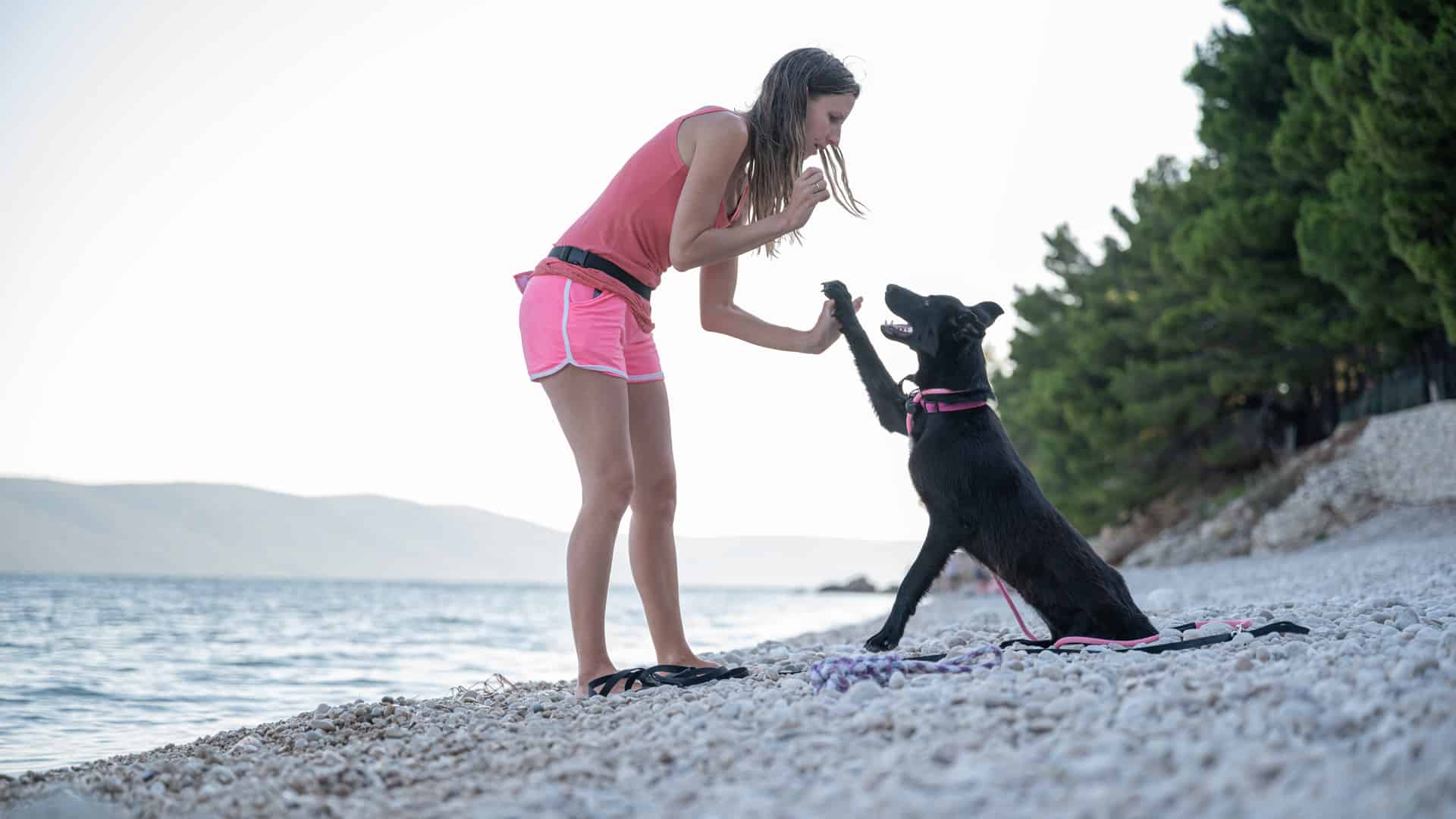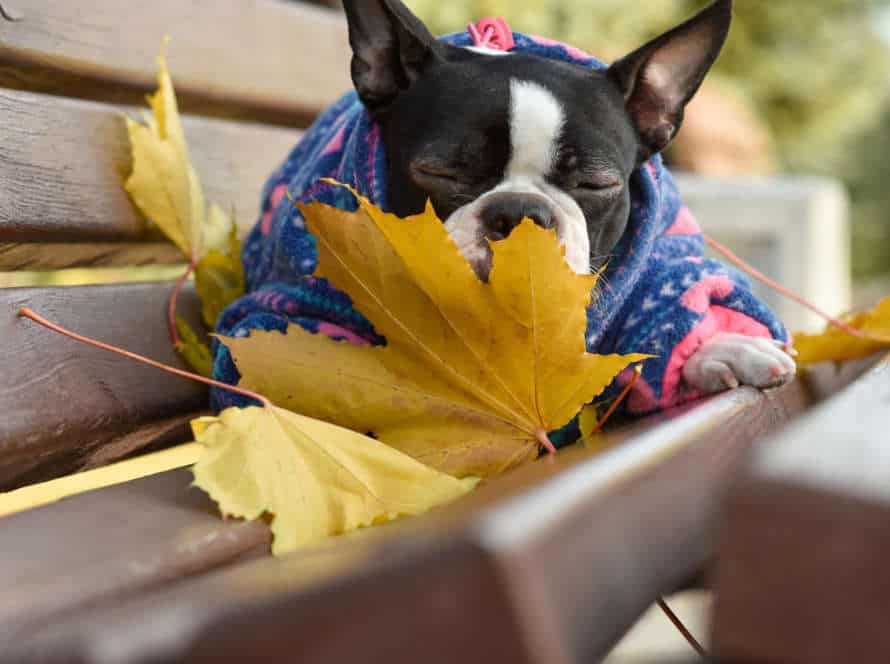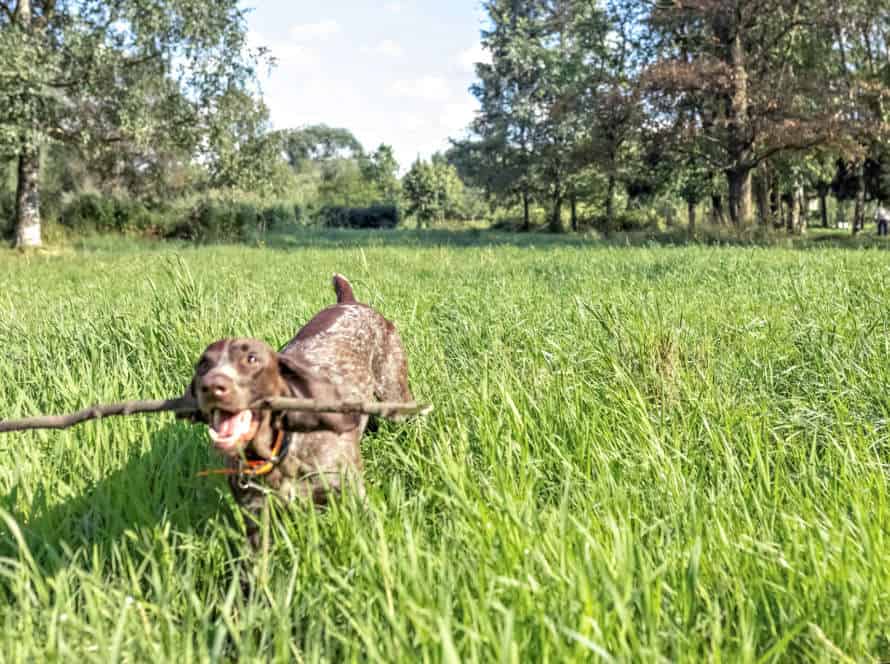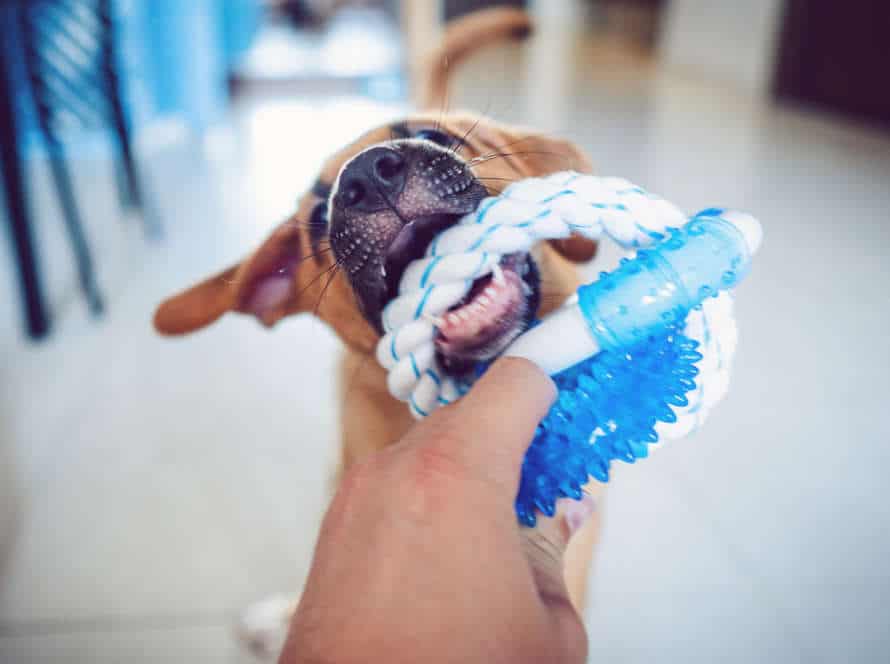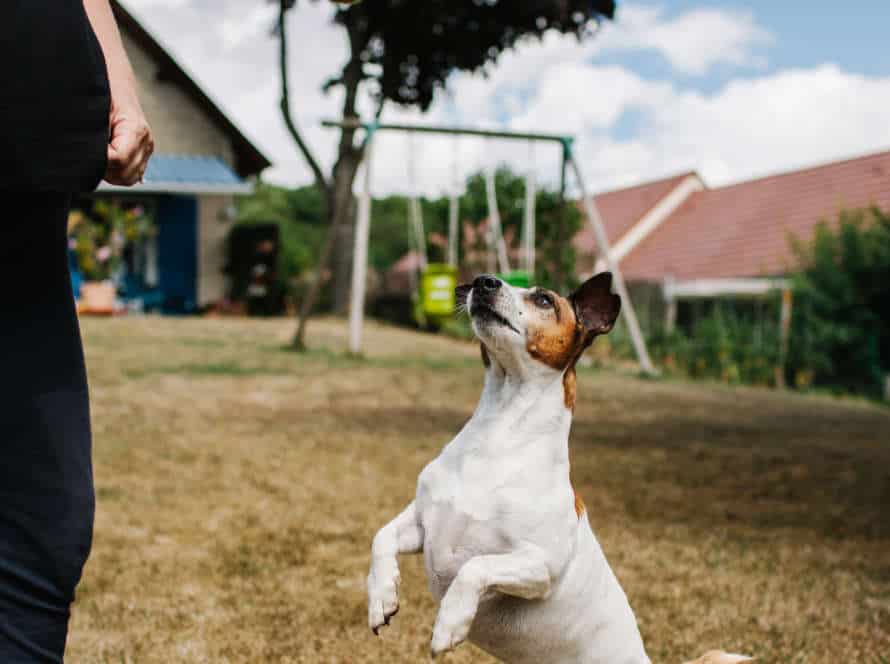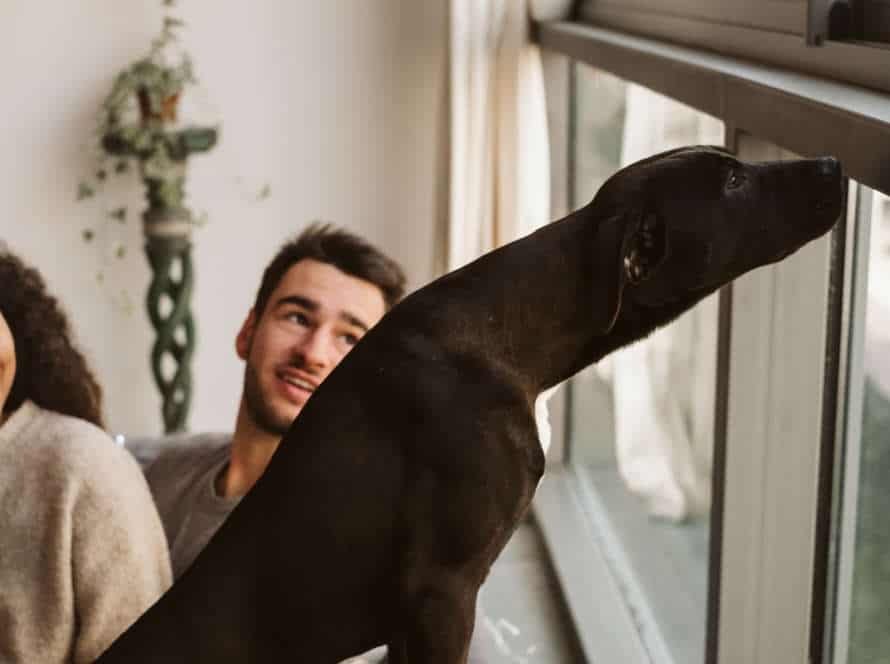Trick Training as Mental Exercise for Adult Dogs: Keep Them Sharp
Trick training is a great mental exercise for adult dogs! It keeps them sharp, engaged and stimulated. Teach your pup the following tricks:
- High five – Get them to raise their paw and touch your hand.
- Spin – Make them turn in a circle on command.
- Speak – Get them to bark on command.
- Crawl – Get them to crawl on their belly.
- Play dead – Make them lie down on their side and play dead.
Trick training stimulates your dog’s brain and strengthens your bond. Pro Tip: Keep training sessions short and sweet. Use treats or praise to reward good behavior.
Benefits of Mental Exercise for Adult Dogs
Mental stimulation is necessary for pup pals, especially those who are adults. If they don’t get enough, they can get bored easily and become sluggish. This can lead to misbehavior. Thankfully, for adult pooches, trick training can be a great way to get their minds exercised.
Let us explain the advantages of mental exercise and how to do trick training correctly.
Improving Cognitive Abilities
Trick training is a great way to keep adult dogs mentally fit! Here are the benefits of mental exercise:
- It can reduce boredom and destructive behavior.
- It boosts memory, learning, and problem-solving skills.
- It strengthens the bond between pet parents and their dogs.
Here are some mental exercises to try:
- Teach your dog new tricks.
- Give them puzzle toys to solve.
- Hide treats and have them find them.
Regular mental exercise and trick training make for happier, healthier adult dogs!
Reducing Boredom and Anxiety
Trick training for adult dogs is a great way to reduce boredom and anxiety! It can also help curb destructive behaviors, enhance cognitive function, and improve overall well-being.
Plus, it strengthens the bond between you and your pet.
For best results, incorporate daily trick training sessions and plenty of positive reinforcement. This will keep your furry friend mentally stimulated, challenged, and sharp. Memory, learning, and problem-solving skills will boost too!
And, restless energy can be converted into positive behavior.
Building Confidence and Trust
Trick training is a great way to sharpen your adult dog’s mental abilities. Plus, it helps build trust between you and your furry pal! There are lots of benefits to mental exercise for adult dogs:
- Improved brain power.
- Longer attention span and better focus.
- Less anxiety and depression.
- More self-confidence.
- Stronger bond between you and your pup.
Trick training is fun and rewarding for your adult dog. You can teach your pup new tricks – plus, you’re reinforcing positive behaviors, discipline, and trust. Doing regular trick training exercises can help your pup stay sharp and excel at problem-solving. It leads to a happier, healthier life for your dog.
Here’s a pro tip: Start with simple tricks, then increase the difficulty level to keep it challenging!
Tricks and Commands to Train Your Adult Dog
Train your adult pup in tricking! It’s not just about fancy tricks – it’s also about reinforcing basic commands and providing a mental workout. Here’s some ideas for you: teach them a few tricks and commands for a mentally stimulating experience. Reward them with fun and keep them sharp!
Basic Tricks: Sit, Stay, Come
Train your adult pooch the essential commands of sit, stay, and come. They help with control and obedience, and keep your furry friend mentally stimulated. Here’s how:
- SIT – Hold a treat near your dog’s nose, move it back towards their tail. As their head follows, they’ll naturally sit down. Say “Sit” and give them a treat.
- STAY – Ask your pup to sit. Put your palm out and say “Stay”. Step back and click and treat if they remain in that spot.
- COME – Ask them to stay and move away a few feet. Kneel and call their name followed by “Come”. Reward them with a treat when they come.
Pro Tip: Use positive reinforcement and treats to encourage good behavior. Be patient while training your adult dog. Practice regularly and slowly increase difficulty to keep them mentally engaged.
Intermediate Tricks: Roll Over, Shake Hand, High-Five
Train your adult dog tricks and commands. It’s a great mental exercise! Here are 3 intermediate level tricks you can teach:
- Get your pup to lie down. With a treat, lure them onto their back saying “roll over”. When they do, reward + praise.
- Ask them to sit. Hold a treat in your closed fist + say “shake”. Praise + give treat when they paw at your hand.
- Again, ask them to sit. Hold a treat above their head + say “give me five”. When they paw, praise + give treat. Gradually raise your hand higher for a stronger high-five.
These tricks will bring you and your pup closer + they’ll feel proud knowing they’re doing great!
Advanced Tricks: Play Dead, Crawl, Balance Treats on Nose
Teaching your adult pup tricks like playing dead, crawling and balancing treats on their snout can give ’em mental stimulation and exercise beyond the basic commands. Here’s how to do it:
- Play Dead: Get your doggo to lie down and roll them onto their side. Give ’em a treat every time and say “play dead” before you roll ’em.
- Crawl: Put a treat in front of them, and hold another one near the ground just out of reach. Your pup will crawl to it. Do this a few times and say “crawl” each time, until they learn it.
- Balance Treats on Nose: Put a treat on the floor in front of them. When they’re sitting calmly, place one on their snout and say “balance”. Let ’em have the treat after a few seconds.
These tricks keep your pup’s minds sharp and entertained.
Training Techniques for Adult Dogs
Train your adult pup for a stimulating experience! Trick-training is great for bonding and boosting their cognitive skills. This article will examine different training techniques that help your adult doggo learn tricks and behaviour. Let the training commence!
Positive Reinforcement Training
Positive reinforcement training is a great way to train adult dogs – instead of punishing bad behavior, reward the good! Here are some tips:
- Use treats, toys, and praise to incentivize good actions such as sitting, staying, and walking on a leash. This creates a positive connection in the pup’s mind.
- Rather than scold, redirect their attention to something fun, like a chew toy or fetch.
- Trick training can be an awesome mental workout for adult dogs – teach ’em to roll over, play dead, give high-fives, and more!
- Remember, all dogs learn differently, so be patient and keep training sessions short.
- Pro tip: Consistency is paramount – make sure everyone interacts with the pup in the same way to reward good behavior.
Clicker Training
Clicker training is a great way to teach adult dogs new tricks and behaviors! Here’s how:
- Begin with basic commands like “sit” or “stay” and use the clicker to mark the desired behavior.
- Give your pup a treat or praise them right away.
- When they understand the connection between the clicker and reward, start teaching new stuff.
- Break the behavior into small steps and use the clicker to mark each one.
- Put the steps together and mark the whole thing with the clicker.
Clicker training engages your pup mentally and rewards good behavior. Pro Tip: Wrap things up with lots of praise and treats to keep your pup motivated.
Target Training
Target training is great for adult dogs. It helps to keep them mentally active and focused. Here’s how to do it:
- Choose a target object – like a toy or plastic lid.
- Hold it near the dog’s nose. Wait for them to touch it with their nose, paw, or any body part.
- As soon as they touch the object, click or say “good”, then give them a treat.
- Repeat this several times to help them associate the reward with the target object.
- Next, gradually move the object away from the dog and encourage them to follow it with their eyes or nose.
- Practice target training a few minutes every day. This technique can also be used for other training like teaching your dog to stay or stand still.
Creating a Trick Training Routine for Your Adult Dog
Make trick training fun for your adult dog! It can stimulate them both mentally and physically. Trick training encourages them to think and remember. Games like hide-and-seek and obstacle courses keep them sharp and healthy. Want to know how to make a successful trick training routine? Let’s take a look!
Assessing Your Dog’s Strengths and Weaknesses
Gauge your adult dog’s strengths and weaknesses to create tailored trick training. Here’s how:
- Watch their playtime and interactions with other canines.
- Note their obedience and basic command competence – sit, stay, come, heel.
- Identify their physical capabilities and restrictions.
- Consider their temperament and character traits.
Assessing your pup allows you to make a unique training routine that emphasizes their strengths and works on their weaknesses. This makes the training more efficient and fun for you and your pup!
Setting Goals and Objectives for Your Dog’s Training
Setting goals and objectives for your pooch’s training is a must! Here are some tips to help you do it right:
- Figure out what behaviors you want your dog to learn.
- Set clear, measurable, and realistic goals for each behavior.
- Use positive reinforcement techniques like treats and praises.
- Track your pup’s progress and adjust your training.
Trick training keeps your adult dog mentally sharp. Pro tip: Start with simple stuff like “sit” and “stay” and work up to more complex behaviors like “roll over” and “play dead“. Have fun and be patient with your pup as they learn.
Tailoring the Training to Your Dog’s Personality and Preferences
When it comes to training your adult dog, it’s important to personalize the training based on their personality and what they like.
Trick training is great for adult dogs – it helps keep their minds active. To make a trick training routine that works for your pup, here’s what to do:
- Observe your pup – figure out their strong points and areas they need more help with. Do they enjoy playing? Are they motivated by food? Do they focus well?
- Choose tricks that match their strengths and interests. If they love playing, teach them to get a certain toy. If food motivates them, give treats to show them new commands.
- Break the trick down into small, easy steps. Use positive reinforcement methods, like clicker training, to reward progress.
- Practice the trick until your pup masters it, and then move on to a new one.
- Keep training sessions short and fun to keep your pup interested and motivated.
Challenges and Solutions for Trick Training Adult Dogs
Trick training is an amazing way for adult dogs to keep their minds active. It can, however, be tricky to engage them due to their increased distraction levels and lower patience. Let’s explore the issues with trick training adult dogs and how to tackle them.
Training Older Dogs with Medical Conditions
Training elderly dogs with medical issues can be tricky. But, trick training adult canines is a great mental exercise to keep their brains active. Yet, it’s essential to think about their health and physical limitations when planning their training. Here are some tips:
- Speak with a vet first to guarantee the pup’s health status is ideal for training.
- Pick tricks suitable for their age, size, and physical situation. Skip tricks that are too demanding and might cause harm or unease.
- Utilize positive reinforcement and reward-based training methods to motivate the pup.
- Break down the tricks into smaller, more achievable steps for the pup to comprehend and do.
- Be steady and patient, allowing them to advance at their own speed and reward them for their hard work.
Pro Tip: Trick training is a great way to bond with your older dog, and it provides them with mental stimulation. Make sure to consider their health and well-being when planning their training.
Training Dogs with Behavioral Issues
Training dogs with behavioral issues can be tough. Identify the cause first – it could be anxiety, fear, or frustration. To teach tricks, set small goals and gradually move to bigger ones. Use positive reinforcement and rewards to make the dog associate training with something good. Above all, show love, patience, and consistency. This is key for your pup’s mental health.
Overcoming Training Plateaus
As your pup ages, they may reach a training plateau, causing both of you to become frustrated. Here are some tips to help spike up your adult dog’s trick training:
- Level it up: Make known tricks harder by adding more steps or commands. For instance, if they already know how to “sit,” teach them to “sit” and then “roll over.”
- Switch the environment: Training in a different environment can keep your dog’s mind stimulated and training fun. Try a park or a friend’s house.
- Different treats: Dogs love rewards! Change the type of treat to motivate them to learn new tricks.
- Stay positive: Dogs feel their owner’s frustration. If things get too hard, take a break and come back later.
- Keep in mind: Training is more than teaching tricks. It’s a mental workout that helps keep them sharp and happy.
Bonus tip: Trick training also strengthens the bond between you and your pup. So, make sure to have fun and enjoy this time with your furry friend!
Frequently Asked Questions
Q: What is trick training for adult dogs?
A: Trick training for adult dogs is a form of mental exercise that involves teaching your dog various tricks to keep them mentally stimulated and engaged.
Q: Is trick training only for young dogs?
A: No, trick training is beneficial for dogs of all ages, including adult dogs. In fact, it can be especially useful for older dogs as it helps to maintain cognitive function and stave off mental decline.
Q: What are some benefits of trick training for adult dogs?
A: Trick training can provide numerous benefits for adult dogs, such as improved focus and concentration, increased confidence, strengthened bond between dog and owner, and reduced anxiety and boredom.
Q: Can any dog learn tricks?
A: Yes, any dog can learn tricks with patience, consistency, and positive reinforcement training methods. However, it’s important to keep in mind that some breeds may be more predisposed to certain types of tricks due to their natural abilities and instincts.
Q: How often should I practice trick training with my adult dog?
A: It’s best to practice trick training with your adult dog on a regular basis, aiming for at least 15-20 minutes per day. However, it’s important to be aware of your dog’s energy level and never push them beyond their limits.
Q: Can trick training replace physical exercise for adult dogs?
A: No, trick training should not replace physical exercise for adult dogs. While it provides mental stimulation, dogs also need regular physical exercise to maintain their overall health and wellbeing.

